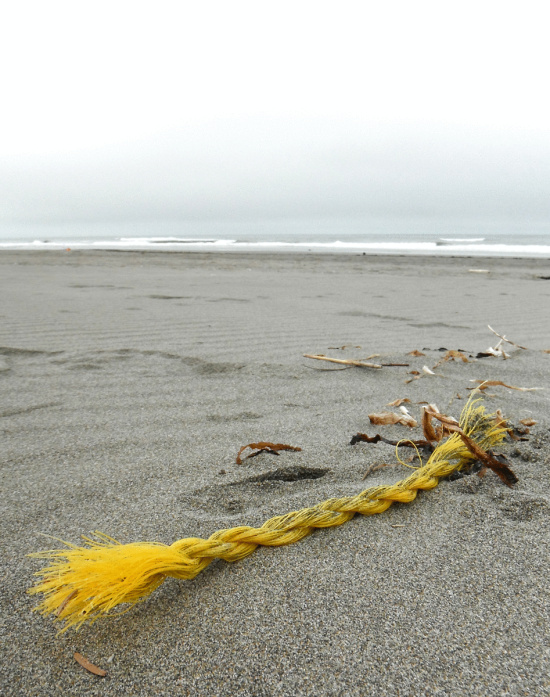
Rope is super useful, except when it’s trash. Help clean up the beaches this Saturday, Sept. 15 as part of the International Coastal Cleanup.
If you’ve been to the beach in the last couple decades, you’ve likely noticed trash scattered around. Cigarette butts, an errant plastic bag, some chunks of styrofoam, a bottle cap – all among the top 10 items found during the annual International Coastal Cleanup. In addition to being a real harsher of the beach mellow, garbage on the sand often winds up in the sea, choking wildlife and detracting from the overall wellbeing of our ocean. Since the ocean covers 70 percent of the Earth’s surface, everything from our health to our economies depends greatly on how well we take care of it.
The International Coastal Cleanup is the world’s largest ocean-focused volunteer effort. In last year’s Coastal Cleanup, nearly 600,000 people picked up more than nine million pounds of trash along more than 20,000 miles of coastlines in nearly 100 countries. Each volunteer records the trash they collect on a special data card; Ocean Conservancy compiles this information to form the world’s largest and most detailed dataset on ocean trash.
Here in Humboldt, the Northcoast Environmental Center coordinates hundreds of local beach cleaning enthusiasts, making sure efforts are distributed throughout the beaches, bay, lagoons, sloughs and rivers.
This year, the cleanup once again coincides with Surf 4 Peace – a surf contest held yearly since 2003 at various spots up and down the coast. This year, Surf 4 Peace returns to the North Jetty and runs three days: The Neighborhood Boardshop hosts a pre-contest art party tonight (Thursday) at the shop, the competition kicks off tomorrow (Friday) at noon and continues all day on Saturday, then everything wraps up with an afterparty at the Arcata Theatre Lounge.
The overlap of events makes things real easy – you can join Humboldt Surfrider to help clean the beach around the North Jetty and check out some our most enthusiastic local (and visiting!) surfers doing their best to make Humboldt waves look good.
On top of everything else, we also have an added challenge to this year’s cleanup – an estimated 1.5 million tons of material from last year’s Japanese tsunami tragedy is thought to still be afloat on the Pacific Ocean, raising concerns about impacts of tsunami debris that may wash up on the West Coast. Significant volumes of tsunami related materials are washing up on Alaskan beaches already and a large dock encrusted with marine life including several high profile aquatic invasive species washed up on a beach in Oregon earlier this summer. Anecdotal reports suggest area residents may have found tsunami-related debris on Humboldt and Mendocino shores already. Here’s more on what you need to know.
You can also print out your own Tsunami Debris Field Guide.
For more even scoop on the issue, check out KHUM’s Sept. 12 Coastal Currents podcast or listen to KSLG’s John Matthews and I talk on KSLG 94.1 FM tomorrow (Friday) at 10 a.m.
And hey, you can’t talk about the ocean in Humboldt without mentioning our awesome Coasties! Show your support Saturday afternoon at the annual Coast Guard Days city ball game.
(As I typed this in a Mendocino coffeehouse, a patron dropped his cigarette butt on the ground, still smoldering, as he crossed the sidewalk into the shop. I looked at the cigarette butt. I looked at him. I looked at the butt. I looked at him. I said, “I think you dropped your cigarette butt.” He said, “Oh? I’m not sure.” I looked at him. He said, “Would you feel better if I picked it up?” I said, “If you don’t want to, I will, but if no one does, it’ll just end up in the ocean.” He said, “No, it won’t. They clean them up every day. I watch.” But he did pick up the butt.)
Jennifer Savage is Ocean Conservancy’s North Coast Program Coordinator, chairperson of the Humboldt Chapter of the Surfrider Foundation and very rarely scolds people outright.
CLICK TO MANAGE